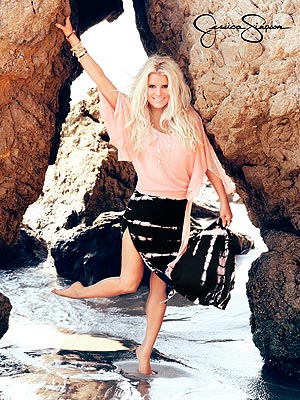BEIRUT (Reuters) - Syrian opposition leader Moaz Alkhatib urged Syrian President Bashar al-Assad's government on Monday to start talks for its departure from power and save the country from greater ruin after almost two years of bloodshed.
Seeking to step up pressure on Assad to respond to his offer of talks - which dismayed some in his own opposition coalition, Alkhatib said he would be ready to meet the president's deputy.
"I ask the regime to send Farouq al-Shara - if it accepts the idea - and we can sit with him," he said, referring to Syria's vice president who has implicitly distanced himself from Assad's crackdown on mass unrest that became an armed revolt.
Speaking after meeting senior Russian, U.S. and Iranian officials, Alkhatib said none of them had an answer to the 22-month-old crisis and Syrians must solve it themselves.
"The issue is now in the state's court...to accept negotiations for departure, with fewer losses," the Syrian National Coalition leader told Al Arabiya television.
The moderate Islamist preacher announced last week he was prepared to talk to Assad's representatives. Although he set several conditions, the move broke a taboo on opposition contacts with Damascus and angered many in its ranks who insist on Assad's departure as a precondition for negotiation.
Alkhatib said it was not "treachery" to seek dialogue to end a conflict in which more than 60,000 people have been killed, 700,000 have been driven from their country and millions more are homeless and hungry.
"The regime must take a clear stand (on dialogue) and we say we will extend our hand for the interest of people and to help the regime leave peacefully," he said in separate comments to Al Jazeera television.
Assad announced last month what he said were plans for reconciliation talks to end the violence but - in a speech described by U.N. Syria envoy Lakhdar Brahimi as narrow and uncompromising - he said there would be no dialogue with people he called traitors or "puppets made by the West".
Syria's defense minister said the army had proved it would not be defeated in its confrontation with rebels but declined to say whether it would respond to an Israeli air strike last week.
Security sources said the Israelis bombed a convoy of arms destined for Assad's ally Hezbollah, a sworn enemy of Israel, in neighboring Lebanon. Syria said the attack struck vehicles and buildings at a military research center near Lebanon's border.
Syria's uprising erupted in March 2011 with largely peaceful protests, escalating into a civil war pitting mainly Sunni Muslim rebels against Assad, who is from Syria's Alawite minority. His family has ruled Syria for 42 years.
ANGER AT IRAN
The violence has divided major powers, with Russia and China blocking U.N. Security Council draft resolutions backed by the United States, European Union and Sunni Muslim Gulf Arab states that could have led to U.N. sanctions isolating Assad. Shi'ite Iran has remained his strongest regional supporter.
Alkhatib met Iranian Foreign Minister Ali Akbar Salehi, Russian Foreign Minister Sergei Lavrov and U.S. Vice President Joe Biden at a security conference in Germany at the weekend.
"Iran's stance is unacceptable and I mentioned to the foreign minister that we are very angry with Iran's support for the regime," Alkhatib said.
He said he asked Salehi to pass on his offer of negotiations - based on the acceptance of the Assad government's departure - to Damascus. The two men also discussed the need to prevent Syria's crisis spreading into a regional conflict between Sunni and Shi'ite Muslims, he said.
"We will find a solution, there are many keys. If the regime wants to solve (the crisis), it can take part in it. If it wants to get out and get the people out of this crisis, we will all work together for the interest of the people and the departure of the regime."
One proposal under discussion was the formation of a transitional government, Alkhatib said, without specifying how he thought that could come about. World powers agreed a similar formula seven months ago but then disagreed over whether that could allow Assad to stay on as head of state.
Activists reported clashes between the army and rebel fighters to the east of Damascus on Monday and heavy shelling of rebel-held areas of the central city of Homs. The Jobar neighborhood, on the southwestern edge of Homs, was hit by more than 100 rockets on Monday morning, an opposition activist said.
The Syrian Observatory for Human Rights said at least 90 people were killed by dusk on Monday.
It said 180 people were killed across the country on Sunday, including 114 rebel fighters and soldiers. Sunday's death toll included 28 people killed in the bombardment of a building in the Ansari district of the northern city of Aleppo.
Assad has described the rebels as foreign-backed Islamist terrorists and said a precondition for any solution is that Turkey and Sunni-ruled Gulf Arab states stop funding, sheltering and arming his foes.
The majority of the insurgents are Islamists but those affiliated with al Qaeda are smaller in number, although their influence is growing. For that reason, Western states have been loath to arm the rebels despite their calls for Assad's ouster.
Rebels and activists say that Iran and the Lebanese Shi'ite militant movement Hezbollah have sent fighters to reinforce Assad's army - an accusation that both deny.
ECONOMIC SUPPORT
"The army of Syria is big enough, they do not need fighters from outside," Iran's Salehi said in Berlin on Monday.
"We are giving them economic support, we are sending gasoline, we are sending wheat. We are trying to send electricity to them through Iraq; we have not been successful."
Iranian President Mahmoud Ahmadinejad said later on Monday that Syria's crisis could not be solved by military means and he called for a national accord leading to elections.
"War is not the solution...A government that rules through war - its work will be very difficult. A sectarian war should not be launched in Syria," he told Al Mayadeen television.
"We believe that (deciding) whoever stays or goes is the right of the Syrian people. How can we interfere in that? We must strive to achieve national understanding, and free elections."
Another Iranian official, speaking in Damascus after talks with Assad, said Israel would regret an air strike against Syria last week, without spelling out whether Iran or its ally planned a military response.
Salehi, Russian Foreign Minister Sergei Lavrov and U.S. Vice President Joe Biden all met Alkhatib in Munich at the weekend and portrayed his willingness to talk with Syrian authorities as a major step towards resolving the war.
But Alkhatib is under pressure from other members of the exiled leadership in Cairo for saying he would be willing to talk to Assad. Walid al-Bunni, a member of the Coalition's 12-member politburo, dismissed Alkhatib's meeting with Salehi.
"It was unsuccessful. The Iranians are unprepared to do anything that could help the causes of the Syrian Revolution," Bunni, a former political prisoner, told Reuters from Budapest.
(Additional reporting by Yeganeh Torbati in Dubai and Stephen Brown in Berlin; Editing by Mark Heinrich)













